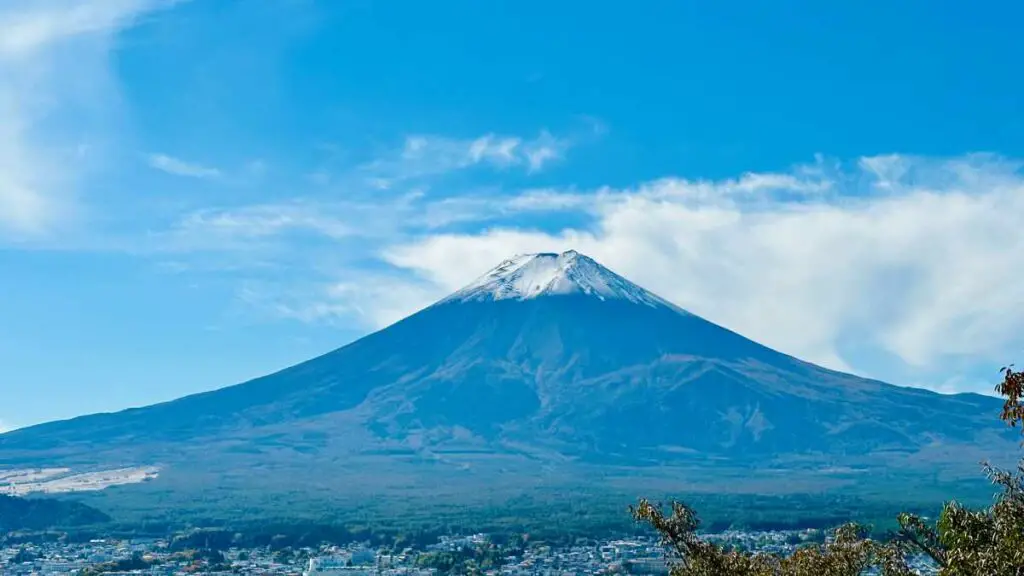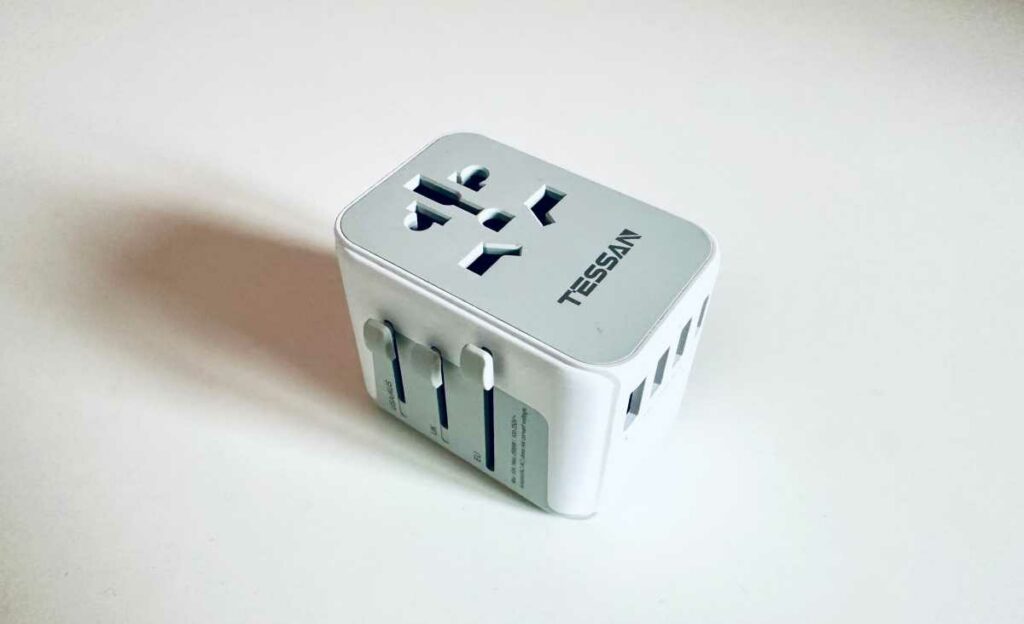
One of the most asked questions when preparing for a trip to Japan concerns what should you pack for Japan. I’ve seen lots of good answers, but I noticed that most of the time something was missing: the travel adapters. Of course, not all tourists will need one because Japanese plugs and sockets are similar to a few countries, but what about other countries, like the US or even European countries?
Tourists from the United States or Canada don’t need a plug adapter, but they need a 3-to-2 prong adapter and sometimes a frequency converter because Japan uses two frequencies (50Hz / 60Hz). Tourists from other countries will need a plug adapter and a voltage and frequency converter.
I’m guessing that all this might sound like a foreign language the first time you read it, but it is actually pretty simple. I’ll explain it to you in the next paragraphs, and I’ll give a few examples, so you can prepare the right adapter for your trip.
What Types of Plugs and Sockets are available in Japan?
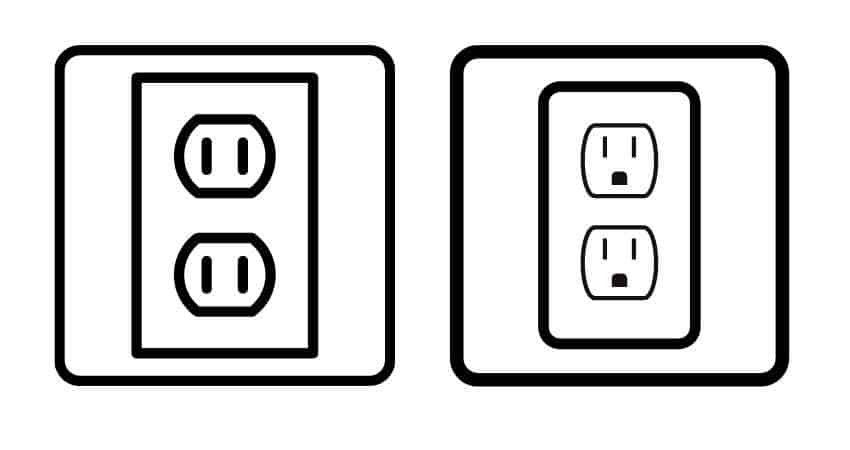
First, let’s start by understanding which plugs and sockets are available in Japan.
In Japan, you will find type A plugs (which are ungrounded plugs with two flat parallel pins) and type B plugs (which have two flat parallel pins and a round grounding pin). These types of sockets (A and B) are also used in the United States and Canada, for example.
So does this mean that Americans and Canadians don’t need an adapter?
You probably won’t, but I would take at least a 3-to-2 prong adapter. If you arrive in Japan with equipment that uses a grounded plug, and you only have a type A socket available, you will have some problems plugging it. If you don’t bring to Japan equipment that uses a grounded plug, then you don’t need a 3-to-2 prong adapter.
Hey, check out these recommendations I have for you!
Before going any further, take a look at some of the recommendations I've handpicked for you. I think these are essential items you should have on your trip to Japan. You can check them out and buy them directly from Amazon.
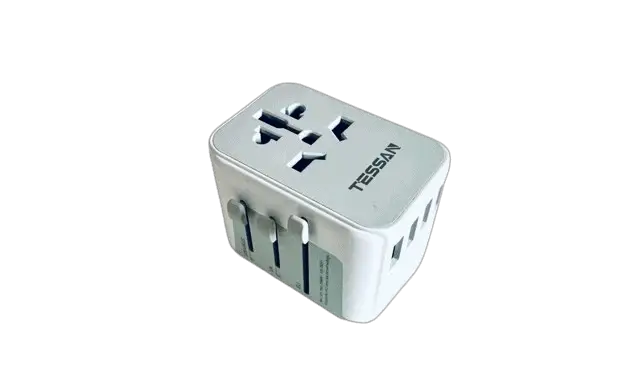
|
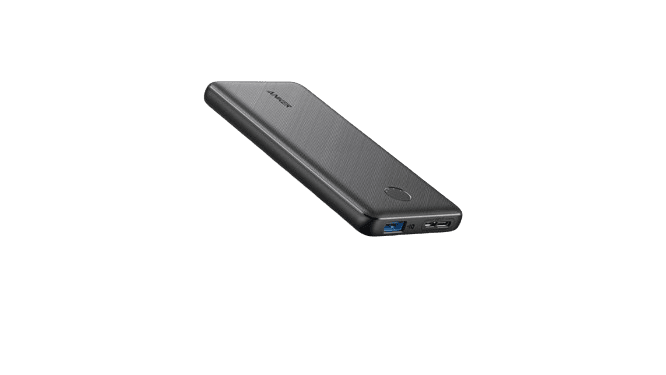
|

|
| A universal travel adapter | A 10,000 mAh power bank | A travel adapter and converter |
If you don’t have one already or if you’re not sure what it is, you can check the 3-to-2-prong adapters easily on Amazon. It is inexpensive and small, and it can avoid this annoying issue once you get to Japan. I saw lots of people commenting that they had a hard time finding Type B sockets, so it’s really worth taking a 3-to-2 prong adapter.
Tourists from most countries other than the United States or Canada must have a plug adapter for their equipment. If you’re used to traveling far away, you probably have one already, but if not, you can find lots of plug adapters on Amazon with great reviews and low prices. Make sure you choose a universal adapter that you can use for other countries too. This way you will save money for your next trips worldwide, and it will avoid the inconvenience of having lots of different adapters.
Japan’s waiting for you! Get your quick guide for the best trip.
Grab It Now
Personally, I always have a universal travel adapter when I travel, it doesn’t convert voltage (which can be an issue for some appliances), but at least it allows me to plug any equipment. I bought this travel adapter from Amazon months ago, and it still works great.
Of course, you can also buy an adapter in Japan, but it will be more difficult to buy the right one if you don’t speak Japanese. By the way, if you buy things in Japan, you might want to read some useful information about tax-free items and which ones you can open/use while in Japan. I wrote an article explaining all the rules for tax-free items so that people can be prepared.
You may also like:
Can I Use my Debit Card in Japan?
Can I Bring Vape to Japan?
Can I Take Paracetamol And Other OTC Medicines to Japan?
Do I Need a Voltage Converter in Japan?
Now that we have seen everything you need to know about the plugs’ shape in Japan, let’s move on to the next problem: voltage and frequency.
Even if you’re not an expert in electricity (don’t worry, I’m not an expert either), you should know that Japan’s voltage and frequency differ from most countries. Luckily, Japan’s voltage is not far from the one in use in the United States or Canada, and your appliances might work, but be warned, sensitive appliances may suffer if you plug them in directly.
The best thing to avoid any unnecessary risk is to use a voltage converter and a voltage adapter. Several travel adapters can do both.
So what’s the difference between a converter and an adapter?
A converter can step down your appliance power to be used with the Japanese voltage. This converter is needed for appliances that have a single voltage.
On the other hand, an adapter adapts the power to the right voltage. Adapters are needed for appliances with dual voltage. These appliances will have the following: INPUT: 100-240V, 50/60 Hz. This means that they can be used worldwide with an adapter.
I can’t stress enough how important this converter and adapter thing is to keep you safe (and your appliances) when trying to plug them while in Japan.
As I mentioned before, there are adapters you can buy that do both (adapter and converter). Some nice models on Amazon are not expensive and are compatible with lots of appliances. If you’re looking for small models that can fit everywhere, I would say that this travel adapter and converter on Amazon is what you need. But if you need to charge several appliances at the same time, a larger one might be a good choice (like this adapter and converter on Amazon).
These recommendations are for American and Canadian tourists. For other countries, you’ll have to switch to the Amazon website that serves your country, but the links above will give an idea of what you should search for.
Dreaming of Japan? Here’s your go-to guide for a great trip.
Download Free Guide
Here’s a table with some English-speaking countries’ voltage for reference. (At the end of this post there’s a link to check other countries in the world too.)
| COUNTRY | VOLTAGE |
| United States | 120V |
| Canada | 120V |
| Australia | 240V |
| United Kingdom | 230V |
| Japan | 100V |
Another important thing you should know about Japan’s electricity is that they use dual frequency. Along with Korea and Liberia, Japan is one of the few countries using dual frequency. This means that Japan, Korea, and Liberia can use 50Hz and 60Hz when almost every other country chooses either 50Hz or 60Hz, but not both.
As a general rule, Eastern Japan (Tokyo, Yokohama, and other northern areas) uses 50Hz and Western Japan (Nagoya, Osaka, Kyoto, Hiroshima, and other southern areas) uses 60Hz.
Usually, frequency is not a big deal except for appliances like clocks, or appliances with motors where speed can be an issue. For instance, a clock operating at 50Hz will run faster on 60Hz and you will have a time problem. Luckily, most appliances are compatible with dual frequency. I checked some of mine and I only found appliances compatible with both frequencies. Make sure you check what’s in use in your own country before you travel.
Here’s a table with the frequency used in the countries we saw above.
| COUNTRY | FREQUENCY |
| United States | 60Hz |
| Canada | 60Hz |
| Australia | 50Hz |
| United Kingdom | 50Hz |
| Japan | 50Hz / 60Hz |
I’m not going to list all the countries’ differences regarding voltage and frequency, but as promised, I’ll leave you a link to the International Electrotechnical Commission website which has a list with all the details (plug type, voltage, and frequency by country).
I tried my best to explain to you all these electrical differences in Japan (with some examples of the types of products that can help you), so you don’t have any unpleasant surprises during your travel. However, make sure you do a little research by looking carefully at all your appliances before taking them to Japan.
By the way, lower-wattage appliances (0W — 25W), like electric toothbrushes or shavers for example, can’t be used even with a converter.



